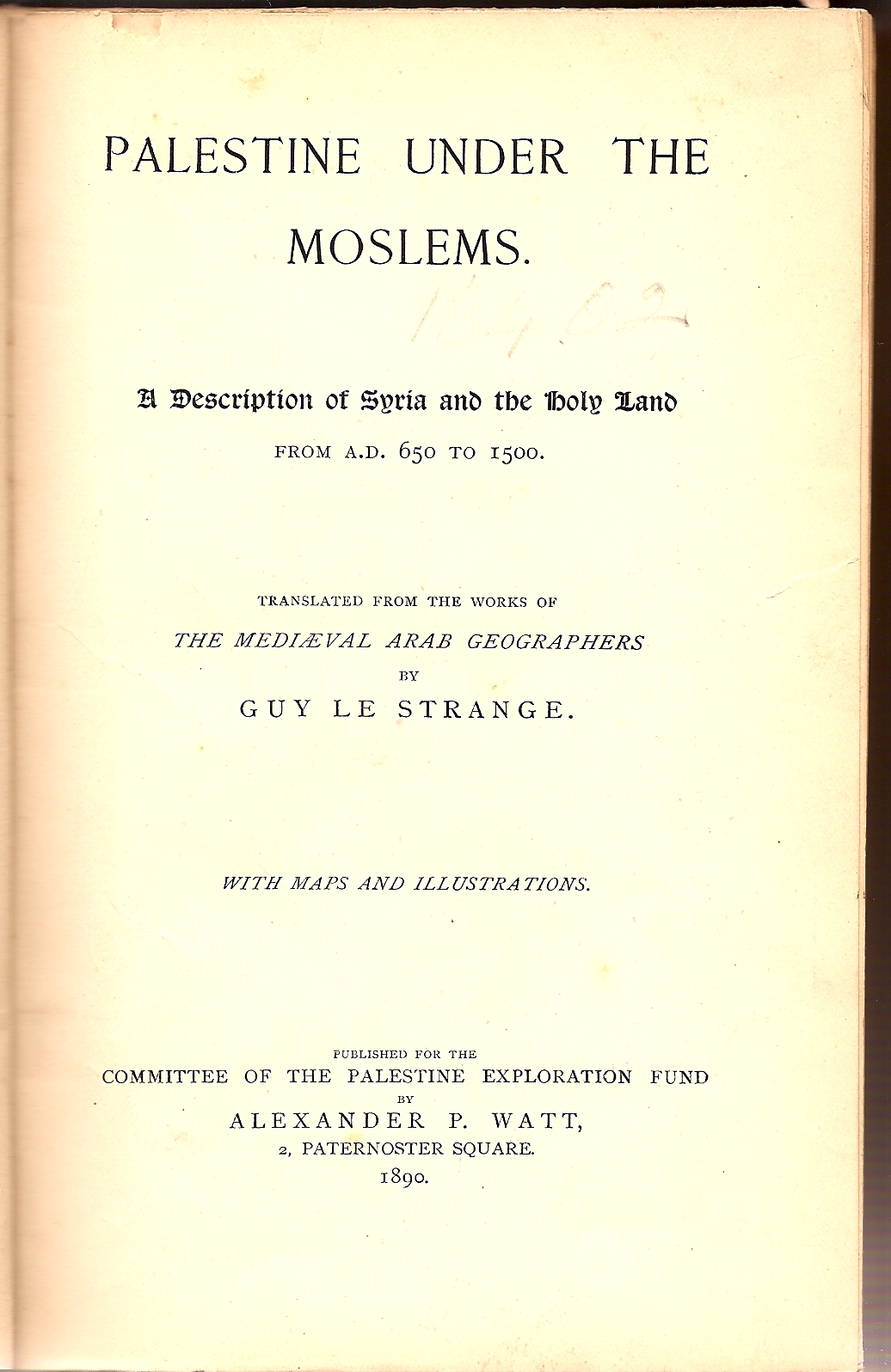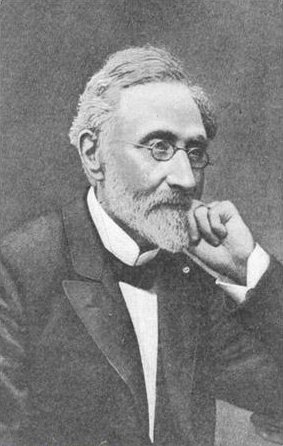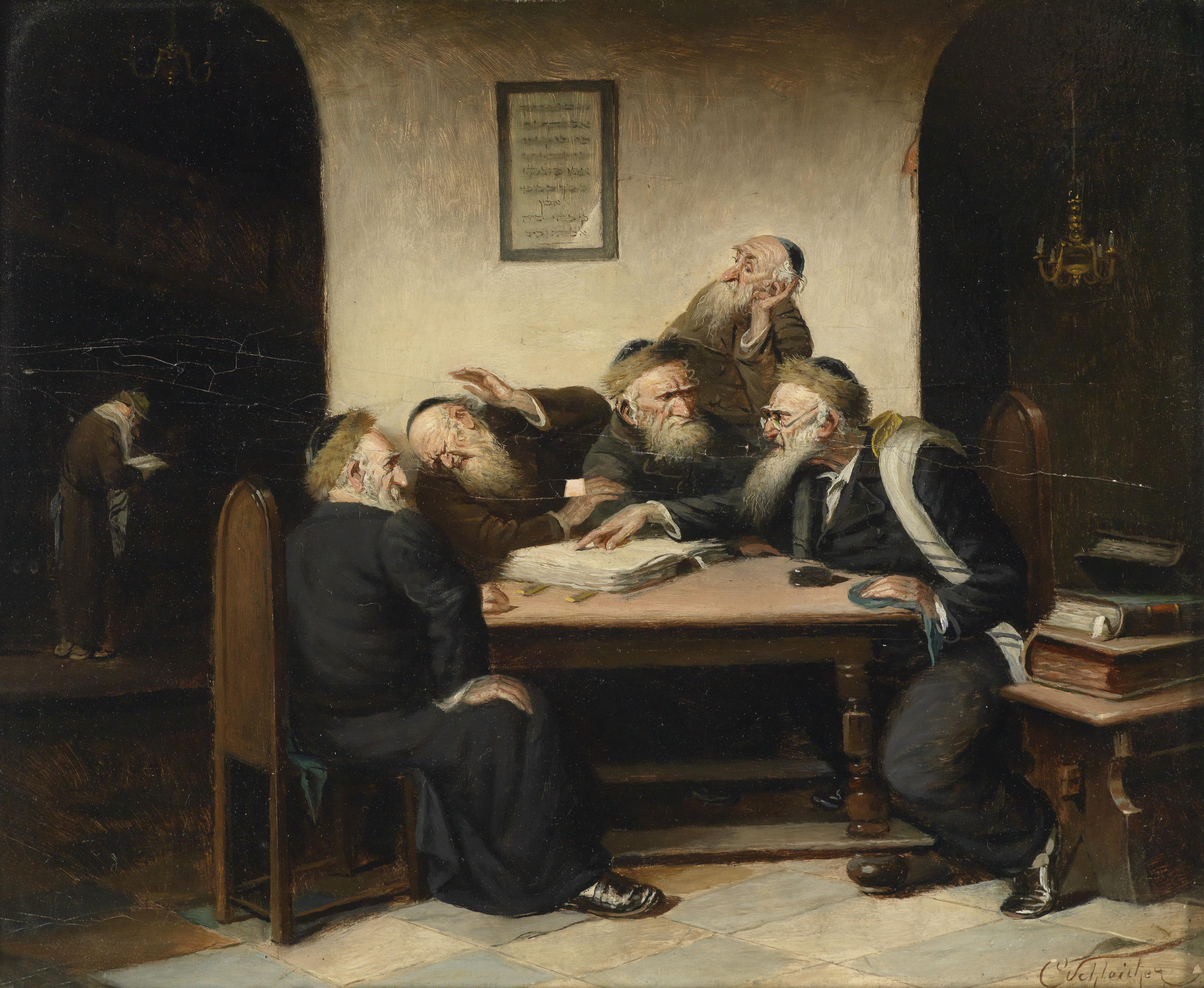|
History Of The Jews In Baghdad
Under the Abbasid Caliphs According to Arab tradition, the town of Baghdad was founded in the middle of the eighth century by the Abbasid caliph Al-Mansur. According to the Jewish Encyclopedia, the fact that a Babylonian city named Bagdad is already mentioned in the Talmud (Ketubot 7b, Zebahim 9a) suggests that the Caliph Mansur only rebuilt and enlarged the old Persian City of Baghdad. That Baghdad was originally a Persian city is indicated by the name, which is thought to be of Persian origin. Situated on the left bank of the Tigris, the town was in close proximity to the two centers of Jewish spiritual life, Sura and Pumbedita. As the Caliph was anxious to see the population of his new residence increase, he offered no resistance to Jews settling there and forming a community. They became so numerous that one of the bridges over the Karkhâyâ canal in the western suburb was called "Ḳanṭarah-al-Yahûd" or Jews' Bridge, also Bridge of the Jews' Fief (Guy Le Strange, "'' ... [...More Info...] [...Related Items...] OR: [Wikipedia] [Google] [Baidu] |
Great Synagogue Of Baghdad
The Great Synagogue of Baghdad ( ar, كنيس بغداد العظيم), also known as the Shaf ve’Yativ Synagogue, is traditionally believed to stand on the site of a synagogue built by King Jeconiah who was exiled from the Land of Israel to Babylon in 597 BCE. It is said that material gathered from the ruins of the Temple in Jerusalem was used in its construction. The building now serves as a museum in which the synagogue had been rebuilt. See also *History of the Jews in Iraq References Edot HaMizrach Jews and Judaism in Baghdad Orthodox synagogues Synagogues in Iraq Synagogues preserved as museums Religious buildings and structures in Baghdad Sephardi Jewish culture in Asia Sephardi synagogues Rebuilt synagogues {{asia-synagogue-stub ... [...More Info...] [...Related Items...] OR: [Wikipedia] [Google] [Baidu] |
Guy Le Strange
Guy Le Strange (24 July 1854 – 24 December 1933) was a British Orientalist noted especially for his work in the field of the historical geography of the pre-modern Middle Eastern and Eastern Islamic lands, and his editing of Persian geographical texts. He was a scholar of the Persian, Arabic, and Spanish languages. Le Strange was one of the original trustees of the E. J. W. Gibb Memorial, an organisation which since 1905 has published the Gibb Memorial Series. He was born in Brussels, Belgium, the youngest child of Henry L'Estrange Styleman Le Strange of Hunstanton Hall, Norfolk, educated at Clifton College and died in Cambridge Cambridge ( ) is a College town, university city and the county town in Cambridgeshire, England. It is located on the River Cam approximately north of London. As of the 2021 United Kingdom census, the population of Cambridge was 145,700. Cam ....Probate Registry Grant – Feb 1934. Works Books * * * * * * Index Articles * References ... [...More Info...] [...Related Items...] OR: [Wikipedia] [Google] [Baidu] |
Steinschneider
Moritz Steinschneider (30 March 1816, Prostějov, Moravia, Austrian Empire – 24 January 1907, Berlin) was a Moravian bibliographer and Orientalist. He received his early instruction in Hebrew from his father, Jacob Steinschneider ( 1782; March 1856), who was not only an expert Talmudist, but was also well versed in secular science. The house of the elder Steinschneider was the rendezvous of a few progressive Hebraists, among whom was his brother-in-law, the physician and writer Gideon Brecher. Education At the age of six Steinschneider was sent to the public school, which was still an uncommon choice for Jews in the Austro-Hungarian empire at the time; and at the age of thirteen he became the pupil of Rabbi Nahum Trebitsch, whom he followed to Mikulov, Moravia in 1832. The following year, in order to continue his Talmudic studies, he went to Prague, where he remained until 1836, attending simultaneously the lectures at the Normal School. In 1836 Steinschneider we ... [...More Info...] [...Related Items...] OR: [Wikipedia] [Google] [Baidu] |
Geonim
''Geonim'' ( he, גאונים; ; also transliterated Gaonim, singular Gaon) were the presidents of the two great Babylonian Talmudic Academies of Sura and Pumbedita, in the Abbasid Caliphate, and were the generally accepted spiritual leaders of the Jewish community worldwide in the early medieval era, in contrast to the ''Resh Galuta'' (exilarch) who wielded secular authority over the Jews in Islamic lands. ''Geonim'' is the plural of (''Gaon) , which means "pride" or "splendor" in Biblical Hebrew and since the 19th century "genius" as in modern Hebrew. As a title of a Babylonian college president it meant something like "His Excellency". The ''Geonim'' played a prominent and decisive role in the transmission and teaching of Torah and Jewish law. They taught Talmud and decided on issues on which no ruling had been rendered during the period of the Talmud. The Geonim were also spiritual leaders of the Jewish community of their time. Era The period of the Geonim began in 58 ... [...More Info...] [...Related Items...] OR: [Wikipedia] [Google] [Baidu] |
Hebrew
Hebrew (; ; ) is a Northwest Semitic language of the Afroasiatic language family. Historically, it is one of the spoken languages of the Israelites and their longest-surviving descendants, the Jews and Samaritans. It was largely preserved throughout history as the main liturgical language of Judaism (since the Second Temple period) and Samaritanism. Hebrew is the only Canaanite language still spoken today, and serves as the only truly successful example of a dead language that has been revived. It is also one of only two Northwest Semitic languages still in use, with the other being Aramaic. The earliest examples of written Paleo-Hebrew date back to the 10th century BCE. Nearly all of the Hebrew Bible is written in Biblical Hebrew, with much of its present form in the dialect that scholars believe flourished around the 6th century BCE, during the time of the Babylonian captivity. For this reason, Hebrew has been referred to by Jews as '' Lashon Hakodesh'' (, ) since an ... [...More Info...] [...Related Items...] OR: [Wikipedia] [Google] [Baidu] |
Heinrich Graetz
Heinrich Graetz (; 31 October 1817 – 7 September 1891) was amongst the first historians to write a comprehensive history of the Jewish people from a Jewish perspective. Born Tzvi Hirsch Graetz to a butcher family in Xions (now Książ Wielkopolski), Grand Duchy of Posen, in Prussia (now in Poland), he attended Breslau University, but since Jews at that time were barred from receiving Ph.D.s there, he obtained his doctorate from the University of Jena.''Encyclopaedia Judaica'' (2007, 2nd ed.) entry on "Graetz, Heinrich," by Shmuel Ettinger and Marcus Pyka After 1845 he was principal of the school of the [...More Info...] [...Related Items...] OR: [Wikipedia] [Google] [Baidu] |
Jewish Mystics
Academic study of Jewish mysticism, especially since Gershom Scholem's ''Major Trends in Jewish Mysticism'' (1941), distinguishes between different forms of mysticism across different eras of Jewish history. Of these, Kabbalah, which emerged in 12th-century Europe, is the most well known, but not the only typologic form, or the earliest to emerge. Among previous forms were Merkabah mysticism (c. 100 BCE – 1000 CE), and Ashkenazi Hasidim (early 13th century) around the time of Kabbalistic emergence. Kabbalah means "received tradition", a term previously used in other Judaic contexts, but which the Medieval Kabbalists adopted for their own doctrine to express the belief that they were not innovating, but merely revealing the ancient hidden esoteric tradition of the Torah. This issue is crystallised until today by alternative views on the origin of the Zohar, the main text of Kabbalah which was written by Rabbi Shimon Bar Yochai who opened up the study of Jewish Mysticism. T ... [...More Info...] [...Related Items...] OR: [Wikipedia] [Google] [Baidu] |
Aaron Ben Samuel Ha-Nasi
Aaron Samuel ben Moses Shalom of Kremnitz, also Abu Aaron ben Samuel ha-Nasi of Babylonia, was a personage who was considered until the turn of the 20th century to be a fictitious creation of the Traditionists (Zunz) —those who, in their desire to find teachers and originators for everything, invented him in order to announce him as the father of prayer-interpretation and mysticism. But the publication of the ''Chronicle of Ahimaaz'' (written in 1054), by Adolf Neubauer, has demonstrated that Aaron is not altogether a creature of the imagination. It is true that legend has far more than history to say about him, and that only the barest outlines of his real career are accessible. Aaron was the son of a high dignitary in Babylonia, a certain Samuel, who, according to R. Eliezer of Worms, was a ''nasi'' (prince). History In the ''Chronicle of Ahimaaz'' Aaron is said to have been a member of the house of Joab, which means that he was the son of an ''ab bet din,'' or chief of th ... [...More Info...] [...Related Items...] OR: [Wikipedia] [Google] [Baidu] |
Torah Learning
Torah study is the study of the Torah, Hebrew Bible, Talmud, responsa, rabbinic literature, and similar works, all of which are Judaism's religious texts. According to Rabbinic Judaism, the study is done for the purpose of the ''mitzvah'' ("commandment") of Torah study itself. This practice is present to an extent in all religious branches of Judaism, and is considered of paramount importance among religious Jews. Torah study has evolved over the generations, as lifestyles changed and also as new texts were written. Traditional view In rabbinic literature, a heavy emphasis is placed on Torah study for Jewish males, with women being exempt. This literature teaches an eagerness for such study and a thirst for knowledge that expands beyond the text of the Tanakh to the entire Oral Torah. Some examples of traditional religious teachings: * The study of Torah is "equal to all" of the ''mitzvot'' of honouring one's parents, performing deeds of lovingkindness, and bringing peace be ... [...More Info...] [...Related Items...] OR: [Wikipedia] [Google] [Baidu] |
Al-Mutadid
Abū al-ʿAbbās Aḥmad ibn Ṭalḥa al-Muwaffaq ( ar, أبو العباس أحمد بن طلحة الموفق), 853/4 or 860/1 – 5 April 902, better known by his regnal name al-Muʿtaḍid bi-llāh ( ar, المعتضد بالله, link=no, "Seeking Support in God"), was the caliph of the Abbasid Caliphate from 892 until his death in 902. Al-Mu'tadid was the son of al-Muwaffaq, who was the regent and effective ruler of the Abbasid state during the reign of his brother, Caliph al-Mu'tamid. As a prince, the future al-Mu'tadid served under his father during various military campaigns, most notably in the suppression of the Zanj Rebellion, in which he played a major role. When al-Muwaffaq died in June 891 al-Mu'tadid succeeded him as regent. He quickly sidelined his cousin and heir-apparent al-Mufawwid; when al-Mu'tamid died in October 892, he succeeded to the throne. Like his father, al-Mu'tadid's power depended on his close relations with the army. These were first forged duri ... [...More Info...] [...Related Items...] OR: [Wikipedia] [Google] [Baidu] |
Mosques
A mosque (; from ar, مَسْجِد, masjid, ; literally "place of ritual prostration"), also called masjid, is a place of prayer for Muslims. Mosques are usually covered buildings, but can be any place where prayers ( sujud) are performed, including outdoor courtyards. The first mosques were simple places of prayer for Muslims, and may have been open spaces rather than buildings. In the first stage of Islamic architecture, 650-750 CE, early mosques comprised open and closed covered spaces enclosed by walls, often with minarets from which calls to prayer were issued. Mosque buildings typically contain an ornamental niche ('' mihrab'') set into the wall that indicates the direction of Mecca (''qiblah''), ablution facilities. The pulpit ('' minbar''), from which the Friday (jumu'ah) sermon (''khutba'') is delivered, was in earlier times characteristic of the central city mosque, but has since become common in smaller mosques. Mosques typically have segregated spaces for men a ... [...More Info...] [...Related Items...] OR: [Wikipedia] [Google] [Baidu] |
Synagogues
A synagogue, ', 'house of assembly', or ', "house of prayer"; Yiddish: ''shul'', Ladino: or ' (from synagogue); or ', "community". sometimes referred to as shul, and interchangeably used with the word temple, is a Jewish house of worship. Synagogues have a place for prayer (the main sanctuary and sometimes smaller chapels), where Jews attend religious Services or special ceremonies (including Weddings, Bar Mitzvahs or Bat Mitzvahs, Confirmations, choir performances, or even children's plays), have rooms for study, social hall(s), administrative and charitable offices, classrooms for religious school and Hebrew school, sometimes Jewish preschools, and often have many places to sit and congregate; display commemorative, historic, or modern artwork throughout; and sometimes have items of some Jewish historical significance or history about the Synagogue itself, on display. Synagogues are consecrated spaces used for the purpose of Jewish prayer, study, assembly, and rea ... [...More Info...] [...Related Items...] OR: [Wikipedia] [Google] [Baidu] |





.jpg)



.jpg)